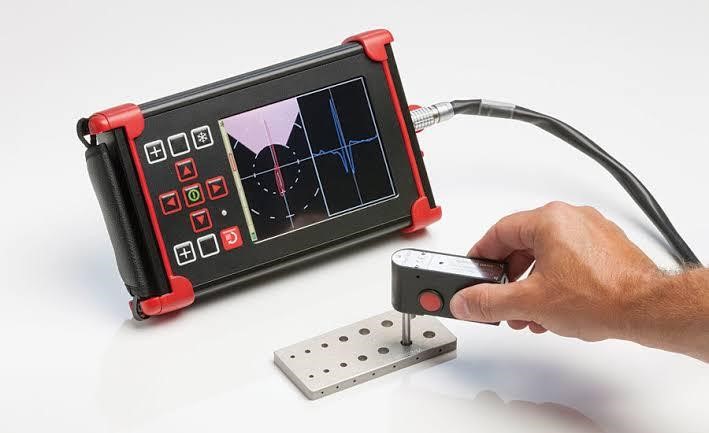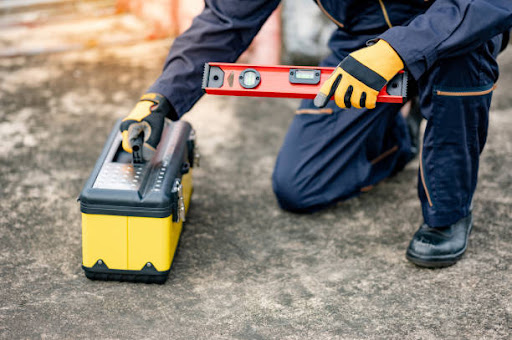Table Of Contents
- Introduction
- What are the Industries where Non-destructive Testing is Used?
- Importance of Non-destructive Testing
- Top 8 Most Widespread NDT Methods
- Non-destructive Testing Instruments
- Top 5 NDT Companies in India
- Difference Between Non-destructive Testing And Destructive Testing
- Conclusion
- Key Takeaways
- FAQs
Introduction
In a world where safety and quality are paramount, industries rely on cutting-edge methods to ensure the integrity of structures and materials without causing any damage.
Non-destructive Testing (NDT) plays a pivotal role in ensuring the structural integrity and safety of various materials and components.
Now we will delve into the top 7 NDT Methods extensively used in different industries.
Before delving into specific methods, it's crucial to understand why NDT is essential.
It allows NDT Professionals to inspect materials without causing damage, making it an indispensable tool in industries such as manufacturing, construction, and aerospace.
What are the Industries where Non-destructive Testing is Used?
NDT could be used in almost every industry type as Visual Inspections occur around every workplace.
For a better understanding, here are some industries listed below that use NDT:
- Aerospace Mining
- Mineral oil & gas
- Chemical
- Construction
- Automotive Industry
- Biomedical devices
- Primary metals
- Marine
Importance of Non-destructive Testing
These are the primary reasons why Non-destructive Testing is adopted by so many industries globally :
1. Efficient:
NDT Techniques are considerably quick and easy when it comes to evaluating any element that assures safety and delivers high-quality performance.
2. Safe:
Most of the NDT Techniques are innocuous to people.
The tests are held to ensure the safety of the product as well as the safety of the person who has to work on any machinery.
3. Accurate:
NDT techniques are proven to be accurate and reliable at the same time.
4. Economical:
NDT Methods are cost-effective as they don't cause any harm or destruction to the examined product, which leads to saving time, money, and resources.
5. Prevent Accidents:
NDT techniques empower peace of mind to the operators by giving them satisfaction about the functioning of the NDT Equipment in the right direction eventually preventing accidents in the future and determining measures that can be adapted for life extension.
Top 8 Most Widespread NDT Methods
There are various techniques used under NDT Methods, with each having its own types of tools, data, & training.
Few techniques enable detailed assessment of an element, and some of them simply allow for an exterior examination.
Given below are the seven most often used Non-destructive Testing Methods:
● Liquid Penetrant Testing (LPT)
● Visual Testing (VT)
● Ultrasonic Testing (UT)
● Acoustic Emission Testing (AE)
● Magnetic Particle Testing (MPT)
Let's have a detailed study of these seven NDT Methods.
1. Liquid Penetrant Testing (LPT)
Liquid Penetrant Testing involves applying a liquid penetrant to the surface of a material to detect surface-breaking defects.
This section will guide readers through the step-by-step process of LPT.
LPT is particularly useful for inspecting non-porous materials. This part will outline scenarios where LPT is the preferred NDT Method.
To ensure accurate results, adhering to best practices is crucial in Liquid Penetrant Testing. This subheading will provide tips and recommendations for professionals conducting LPT.
2. Eddy Current Testing(ET)
To determine the areas of the damage through this electromagnetic testing focuses on utilizing the ratios of the strength of eddy currents, i.e. electrical currents in a magnetic field that surrounds the element.

3. Visual Testing(VT)
Visual Testing is the most straightforward NDT Method, involving a visual examination of the material or component. This section will provide an overview of VT principles.
Visual Testing is versatile and finds applications in various industries. This part will discuss the breadth of scenarios where VT is employed for inspections.
Despite its simplicity, VT has its challenges. This subheading will explore common challenges faced during visual inspections and how to overcome them.
4. Ultrasonic Testing(UT)
Ultrasonic Testing utilizes high-frequency sound waves to detect flaws in a material. This section will explain the science behind UT and how it is applied in practice.
From Weld Inspections To Thickness Measurements, UT finds applications in various fields. This part will discuss the specific scenarios where UT is most effective.
While Ultrasonic Testing is highly versatile, it's essential to understand its advantages and limitations. This subheading will provide a balanced view of what UT can and cannot achieve.
5. Radiographic Testing(RT)
Radiographic Testing involves the use of X-rays or gamma rays to inspect the internal structure of materials.
This section will provide an in-depth explanation of the RT process. RT is widely used in the aerospace and oil industries.
This part will shed light on how Radiographic Testing contributes to ensuring the quality and safety of components in these sectors.
Given the nature of radiation involved, safety is paramount in RT. This subheading will outline the necessary safety measures to be implemented during an RT inspection.
6. Acoustic Emission Testing(AE)
Acoustic Emission Testing involves monitoring acoustic emissions from a material under stress. This section will elaborate on the principles and processes of AET.
AET is particularly useful in specific scenarios. This part will explore the niche applications where AET outshines other NDT Methods.
The world of NDT is continually evolving. This subheading will discuss potential future trends in AET and how they might shape the industry.
7. Eddy Current Testing (ECT)
Eddy Current Testing uses electromagnetic induction to detect defects. This section will explain the scientific principles behind Eddy Current Testing.
ECT is prevalent in industries such as aerospace and automotive. This part will delve into specific applications within these sectors.
While Eddy Current Testing is powerful, it's crucial to understand its pros and cons.
This subheading will provide a balanced view of what Eddy Current Testing excels at and where it might have limitations.
8. Magnetic Particle Testing (MPT)
Magnetic Particle Testing is based on the principle that magnetic fields are disturbed by the presence of defects. This section will elucidate the fundamental concepts of MPT.
MPT is commonly used in the automotive and construction industries. This part will explore specific applications and scenarios where MPT is most effective.
While Magnetic Particle Testing is effective, certain factors need to be considered for optimal results. This subheading will provide insights into these considerations.

Non-destructive Testing Instruments
NDT includes many NDT Types of Equipment such as noise detectors, thickness gauges & eddy current instruments etc.
Some of the devices are handheld, and others can be mounted in a cabinet or on a rack.
We will discuss some of the instruments that are used in Non-destructive Testing.
1. Eddy Current Instruments
This instrument is used to provoke eddy currents in the conducive materials.
These instruments help in detecting drawbacks, defining the density, Inspecting Welds etc.
Eddy's current instrument has an analog/digital meter and a magnetic probe which is either straight or angled.
2. Acoustic Emission Instruments
These instruments are used for monitoring and observing changes in the electrical and mechanical systems.
3. Non-destructive Testing Conductivity and Resistivity Meters
These are the devices that are used for evaluating the electrical conductivity and resistivity of a substance to specify the traits of its materials.
4. Ultrasonic Instruments
These instruments aim to use beams of high-frequency wave signals to regulate and measure the components of the material.
Click on the link to watch an Ultrasonic Testing device called Sonaphone.
5. X-Ray Instruments
X-ray instruments penetrate gamma radiation or X-rays that capture the internal picture of the material for the screening process.
6. Corrosion and Electrochemical Instruments
To determine corrosion and electrochemical circumstances in machines, batteries, field appliances, colloids, etc.
Top 5 NDT Companies in India
There are many Non-destructive Testing Companies in India that provide excellent services, out of which we have handpicked the top 5 non-destructive testing companies in India.
- OnestopNDT
- Arora Technologies Limited
- NDTS India
- Sai Heatreaters & Non-Destructive Testing PVT. LTD.
- Mayuresh Engineers and Fabricators
Difference Between Non-destructive Testing And Destructive Testing
The most significant difference between the Non-destructive Testing and Destructive Testing two lies in their names.
In Non-destructive Testing, the part of the substance doesn't get destroyed in the process and remains capable of providing a good service.
But in destructive testing, the element gets damaged and can no longer be fit for use.
Some NDT Methods are macro sectioning, tensile testing & 3-point blend testing.
Conclusion
These NDT Methods are chosen based on factors such as the type of material being tested, the specific defect being sought, and the accessibility of the test area.
Combining multiple NDT Techniques is often employed for comprehensive inspections.
By using a combination of NDT Techniques, inspectors can obtain a more accurate and detailed assessment of the material's integrity.
This approach allows for a more thorough examination, ensuring that any potential defects or flaws are detected.
Key Takeaways
- NDT is a crucial tool in manufacturing, construction, and aerospace for ensuring structural integrity without causing damage.
- It uses various techniques, such as Ultrasonic Testing, radiographic testing, magnetic particle testing, and more.
- Each NDT Method has its advantages and limitations, and its effectiveness depends on careful considerations and adherence to best practices.
- The industry is constantly evolving, with future trends in Acoustic Emission Testing being discussed and shaping the future.
- Understanding the pros and cons of each method is essential for accurate defect detection.
FAQs
Q: Why is NDT necessary?
A: NDT is crucial for inspecting materials without causing damage, ensuring the safety and integrity of structures and components.
Q: How does Ultrasonic Testing work?
A: Ultrasonic Testing uses high-frequency sound waves to detect flaws within a material by analyzing the reflected waves.
Q: Are there safety concerns with Radiographic Testing?
A: Yes, safety is a top priority in Radiographic Testing due to the involvement of X-rays or gamma rays. Strict safety measures must be followed.
Q: What are the common applications of Magnetic Particle Testing?
A: Magnetic Particle Testing is commonly used in the automotive and construction industries for detecting surface and near-surface defects.
Q: Why is Visual Testing considered essential despite its simplicity?
A: Visual Testing is quick, cost-effective, and can detect visible surface defects, making it an essential and widely used NDT Method.
Q: In which industries are eddy Current Testing prevalent?
A: Eddy Current Testing is prevalent in industries like aerospace and automotive for inspecting conductive materials.
Q: What are the niche applications of Acoustic Emission Testing?
A: Acoustic Emission Testing is often used in monitoring pressure vessels, pipelines, and other critical structures for early detection of defects.










